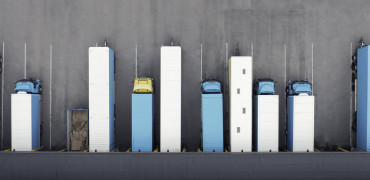With autumn on our doorsteps, Tom Bowland looks back at a scorching hot summer in the UK and what this means when it comes to overheating and building design.
I’d like to say that as I write this blog in the heat of August, I am sitting in the comfortably air conditioned Mitsubishi Electric offices in Manchester. Unfortunately, I’m working at home, with no cooling other than an open window and plenty of ice cubes in my drink.
Here in the UK, our buildings have primarily been designed on the principle that this is a cold country, leaving them ill-designed to cope with heatwaves. Years of legislation aimed at reducing energy use (with the best intentions) have resulted in air-tight buildings that effectively lock in the heat when temperatures rise.
And in our cities, the problem is worse. The urban heat island (UHI) effect makes our heatwave particularly noticeable in dense urban environments. For example, research from the University of Manchester shows that the city suffers 3oC excess temperature compared to surrounding areas on a hot day. There is little relief at night because the heat is trapped by buildings – exacerbating the problem until temperatures drop.
In tackling overheating within buildings, we must also address energy use and carbon emissions
The UHI problem
City planners are looking at tackling the UHI problem, including introducing more green spaces to mitigate the heat trapped by buildings. And in cities like Manchester, there are undertakings to decarbonise heating to help limit the impacts of climate change.
“In tackling overheating within buildings, we must address the issue carefully considering all the factors, particularly energy use and carbon emissions.” [large quote format]
For instance, we could say that many (though certainly not all) office buildings have air conditioning installed, so hot weather shouldn’t be an issue. But as temperatures rise, cooling demand increases, and we operate our air conditioning systems for longer. In our fight to cut carbon emissions, this is a step backwards.
In addition, building owners already face higher energy bills, and running equipment more intensively will add to those costs. Moreover, if all buildings increase their electricity use in summer, the strain on the UK energy grid could be more than it can handle. Spain, which has been hit hard by the same heatwave, faces this issue. In response to the risks of electricity blackouts, its government has introduced laws to set the lowest air conditioning temperature in buildings to 27oC.
Of course, it may be possible to open windows for cooling, but that’s not advisable for buildings in cities next to busy roads. As we’re all aware, the air coming in from outside isn’t necessarily cool - or fresh. For many people living and working in cities around the UK, our rising temperatures are bringing that problem to a head.
The solution
Fortunately, there are options which can work for new and existing buildings to alleviate the issue of higher temperatures while also improving the indoor environment. For example, last year, Mitsubishi Electric launched a commercial version of its highly popular Lossnay mechanical ventilation with heat recovery (MVHR) product.
Aimed at a range of buildings, including offices, schools and retail, Lossnay can extract stale air and introduce fresh, filtered air to an occupied space. The unit can also integrate with existing air conditioning systems, a great addition to city centre buildings.
Mitsubishi Electric has a range of chillers suitable for all project sizes for building owners looking to update or add energy-efficient cooling. For example, the e-Series comes with low-GWP refrigerant R32 and a Seasonal Energy Efficiency Ratio (SEER) of 5.52, making it ideal for commercial buildings such as offices, hotels, and universities or hospitals. The e-Series is a modular chiller, and the small, lightweight units are suitable for delivery to a city-centre building – and use much less space than traditional chillers.
Moving forward
As temperatures continue to rise, our cities must be remodelled and designed to cope with the new reality of our changing climate. The challenge of increasingly hot UK summers must be dealt with in the context of our energy use and carbon emissions. We cannot simply add more cooling equipment without thinking about the impact on the environment – accelerating climate change is not the answer to climate change.
If you would like to know more about the HVAC solutions we can offer, please visit our dedicated page.
Or if you are an M&E Contractor and you would like support with your building projects, please contact me direct by emailing Tom.Bowland@meuk.mee.com
Tom Bowland is Business Development Manager for M&E Contractors in the North West




